Flat caps have been worn for centuries, with origins that go all the way back to the Middle Ages. Commonly worn by the working classes, this versatile and practical cap was also adopted by aristocrats, the wealthy, and other elites, primarily while engaged in leisure activities and sporting pursuits like hunting or riding in the country.
Within Classic Style, caps are one of the most iconic examples of casual headgear, worn by everyone from Hollywood movie stars to humble newsies on street corners. With increasing interest in period dramas set during the Golden Age of Menswear, including Downton Abbey, Boardwalk Empire, and Peaky Blinders, flat caps are enjoying something of a Renaissance.
But you don’t have to cosplay as Lord Grantham or Tommy Shelby to wear a flat cap: these classically stylish hats are a great way to keep warm and look cool for gentlemen of any age who wish to expand the range of hats they wear while remaining true to Classic Style.
Through this guide, you will learn precisely what a flat cap is, the history of this unique garment, how best to style it, and how to identify a quality example, with several brand recommendations to help get you started.
See all of our hat content!
The Benefits of Wearing a Flat Cap
Easily Approachable
If you are new to wearing hats that are typical of Classic Style, the flat cap is more approachable than many classic hats. Flat caps make a softer statement and have similar visual lines to popular contemporary hats, like baseball caps, and so are less intimidating than fedoras or bowler hats. If you are new to wearing classic hats, caps are a great place to start!
Simple to Size
Because of their soft construction, flat caps have more give when sizing than extremely structured hats like boaters or top hats. Therefore, you are more likely to find a hat that fits you well at a retail store or from a vintage store than more formal hats that require a very precise fit to look perfect.
Seasonally Versatile
While traditional flat caps should not be worn during the summer because they are too insulating, they are ideal companions for every other season. When purchased in a versatile earth-toned pattern, you could easily wear your flat cap for around 8 months or more out of the year.
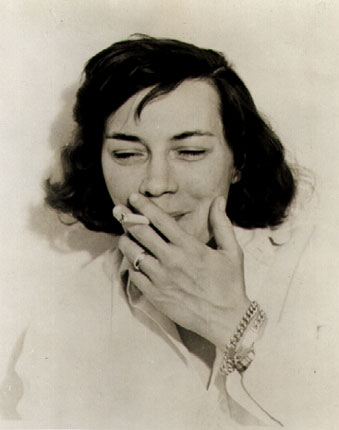
“He had a sudden whim for a cap and bought one in the haberdashery, a conservative bluish-grey cap of soft English wool. He could pull its visor down over nearly his whole face when he wanted to nap in his deck-chair, or wanted to look as if he were napping. A cap was the most versatile of headgear, he thought, and he wondered why he had never thought of wearing one before? He could look like a country gentleman, a thug, an Englishman, a Frenchman, or a plain American eccentric, depending on how he wore it.”
From The Talented Mr. Ripley by Patricia Highsmith
Wear your hat with style and confidence!
The Construction of a Flat Cap
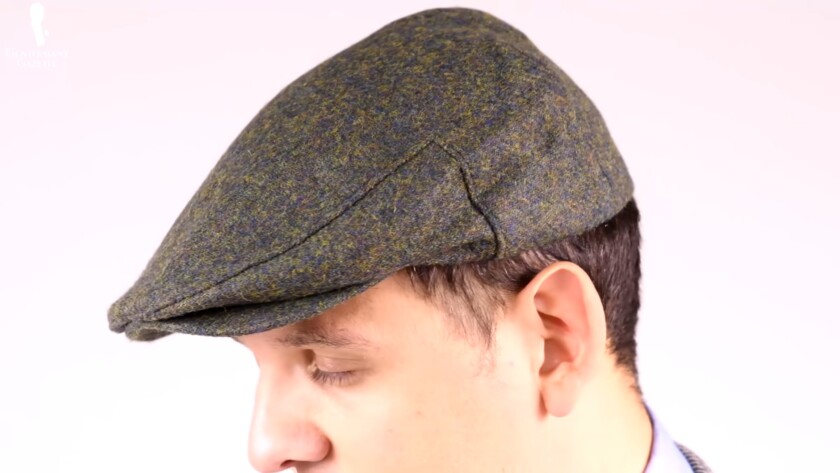
Seams on the sides of a flat cap give the hat structure and shape. Its triangular profile is achieved by attaching the body of the hat to the brim.
The basic flat cap comprises a rounded body made from soft fabric and features a short, rounded front brim.
The body of the hat can be assembled in two different ways.
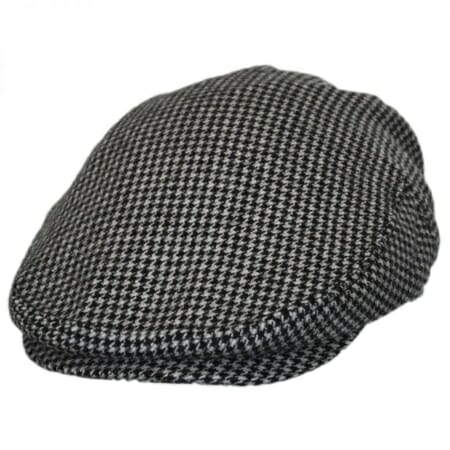
Houndstooth simple flat cap.
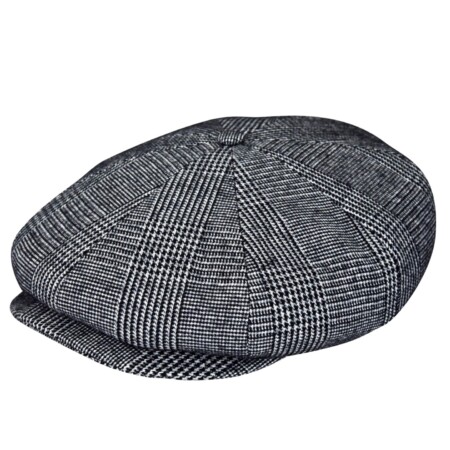
Houndstooth panel flat cap.
| The Simple Flat Cap | The Panel Flat Cap |
|---|
| The simple flat cap has a level, trim silhouette due to its single-piece construction that creates a flat surface along the crown of the hat. The body of the cap is pulled forward over the brim and secured in place either by being sewn or snapped to the brim. This pulled-forward effect gives the cap its distinctive triangular side profile. | The panel cap has a looser, more voluminous silhouette created by sewing various triangular panels of material together from a central point at the crown of the hat. Traditionally, a panel flat cap is made from 8 panels of cloth, but other combinations, including 5 or 6 panels, are also available. A cloth button at the crown covers and secures the area when all of the panels meet. The body of this cap is also pulled forward over the brim but less obviously so than with a simple flat cap. |
| |
Because the simple flat cap has a flatter profile, it is sometimes erroneously said that only the simple flat cap is a flat cap and that the panel cap is not a flap cap: in fact, both hats are examples of flat caps.
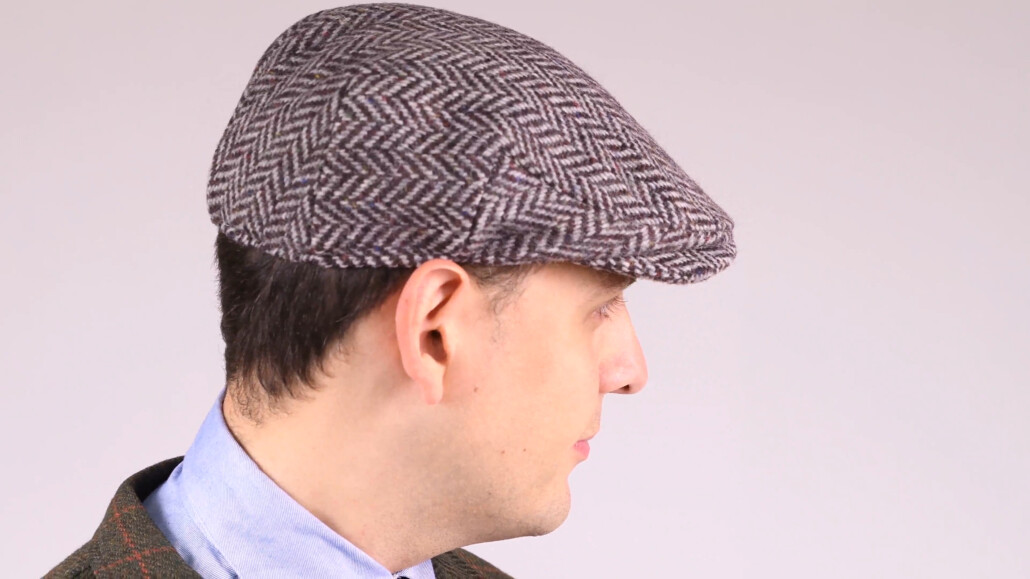
The triangular shape typical of flat caps.
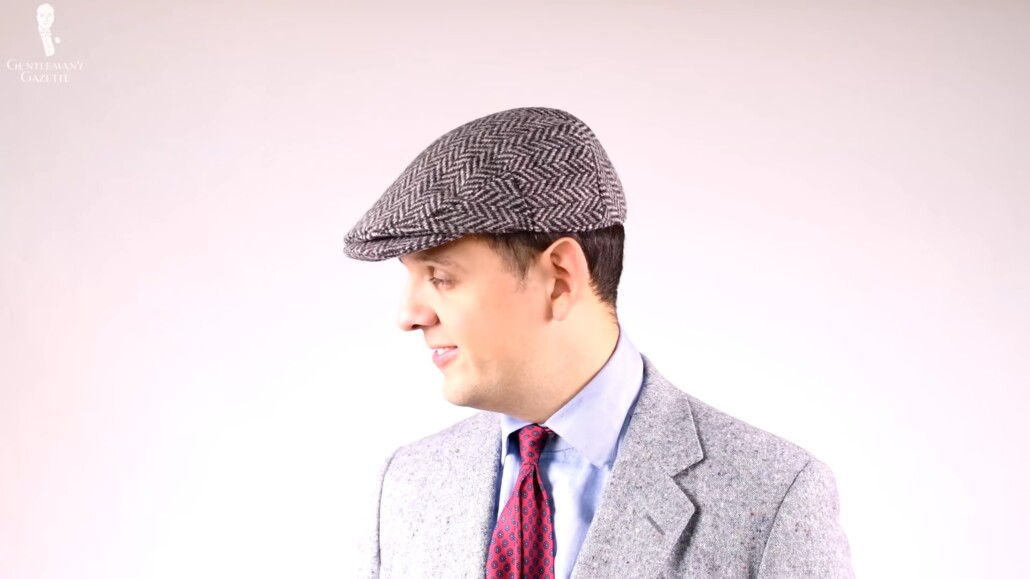
On most flat caps the body of the hat is pulled over and secured to the brim either sewn or snapped into place
What’s in a
Name?
You have likely heard the terms “flat cap,” “panel cap,” and “newsboy cap” at some point in your life. But depending on the time and geographic location, over 20 names and slang terms have been used to refer to this cap. They include cabbie, paddy, Gatsby, dai, longshoreman’s, scally, Wigens, ivy, derby, Jeff, duffer, duckbill, driving, bicycle, Irish, or crook cap, as well as sixpence, bunnet, cheese-cutter, Vergon or Joao’s hat.
The History of the Flat Cap
The Medieval Origins of a Modern Cap

This 16th-century painting depicts everyday medieval attire: note in particular the variety of cap-like hats worn by the men. “The Peasant Wedding” (c. 1560) by Pieter Brueghel the Elder. [Image Credit: Wikimedia.]
The flat cap as we know it today evolved from the extremely simple headgear that was popular during the Middle Ages. These basic hats consisted of a band that secured them to the head and a mass of fabric to retain heat and repel the elements; wool was a favored material.
These early caps were sometimes referred to as bonnets, now often called Tudor bonnets, to distinguish them from those bonnets traditionally associated with women.
The Origins of the Word
Cap
The ubiquity of the cap is made evident by the origins of its name, which is derived from the French word chapeau, which refers to any head covering. By the 17th century, the term cap was well-known and the generally accepted name for the headgear that closely resembles its contemporary iteration.
An Unusual Law Associates Flat Caps with the Working Classes
In 1571, to benefit local wool production, the English Parliament passed a law stating that all men over the age of 6 were required to wear wool hats on Sundays and holidays; nobles and other “persons of degree” were exempted as they were already likely to wear fine hats made from expensive quality materials.
Failure to wear a wool hat would result in a fine of three farthings per day, equal to about $1.50 in today’s money. Because flat caps were the cheapest and easiest wool hats to make, they quickly became the preferred means to follow the law.
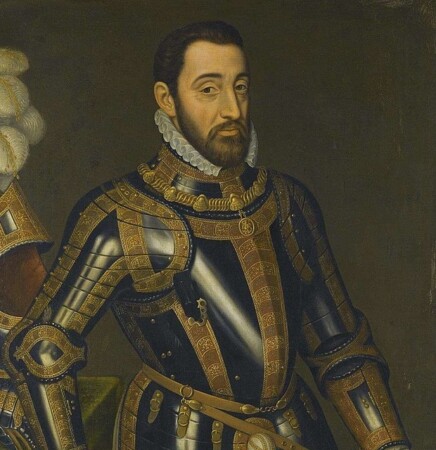
“Every person above the age of six years, excepting maids, ladies, gentlewomen, noble personages, and every lord, knight and gentleman of twenty marks land, residing in any of the cities, towns, villages or hamlets of England, must wear, on Sundays and holidays, except when travelling, a cap of wool, thicked and dressed in England, made within this realm, and only dressed and finished by some of the trade of cappers, upon pain to forfeit for every day of not wearing 3s. 4d.”
By Act of Parliament, 1571
Although the act was repealed in 1597, it was instrumental in further associating the flat cap with the poor and working classes.
The Flat Cap in the 19th and 20th Centuries
The Flat Cap Transitions from the Lower Classes to the Upper Classes
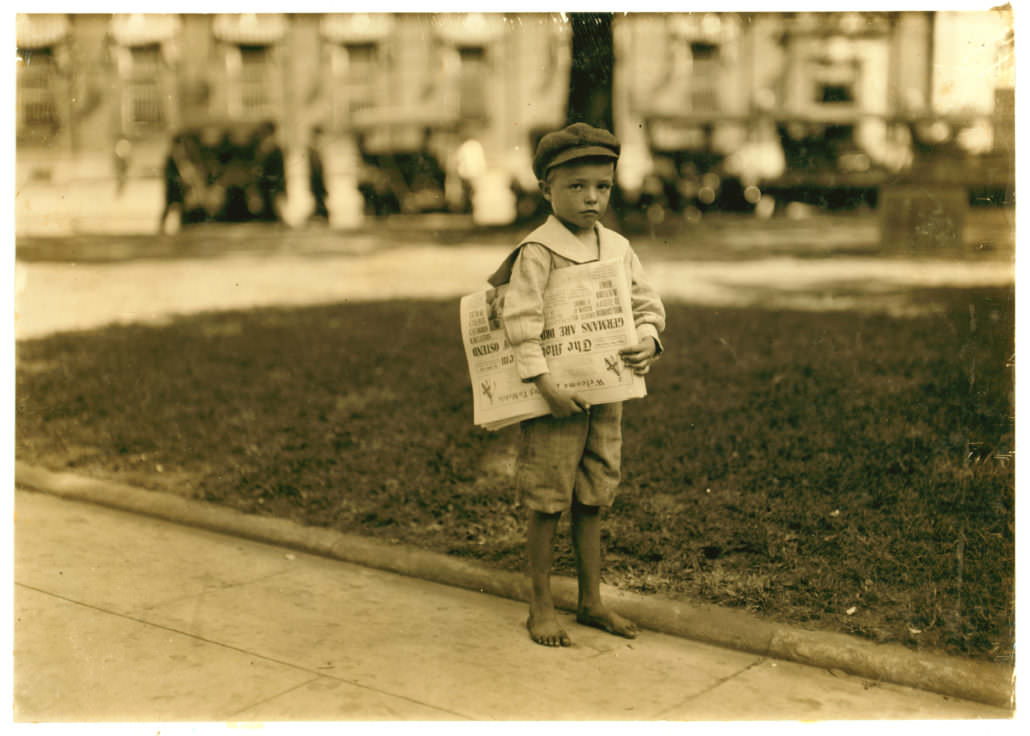
A newspaper boy wearing a panel flat cap, c. 1925.

An olive sport coat with flat cap ensemble from the 1930s.
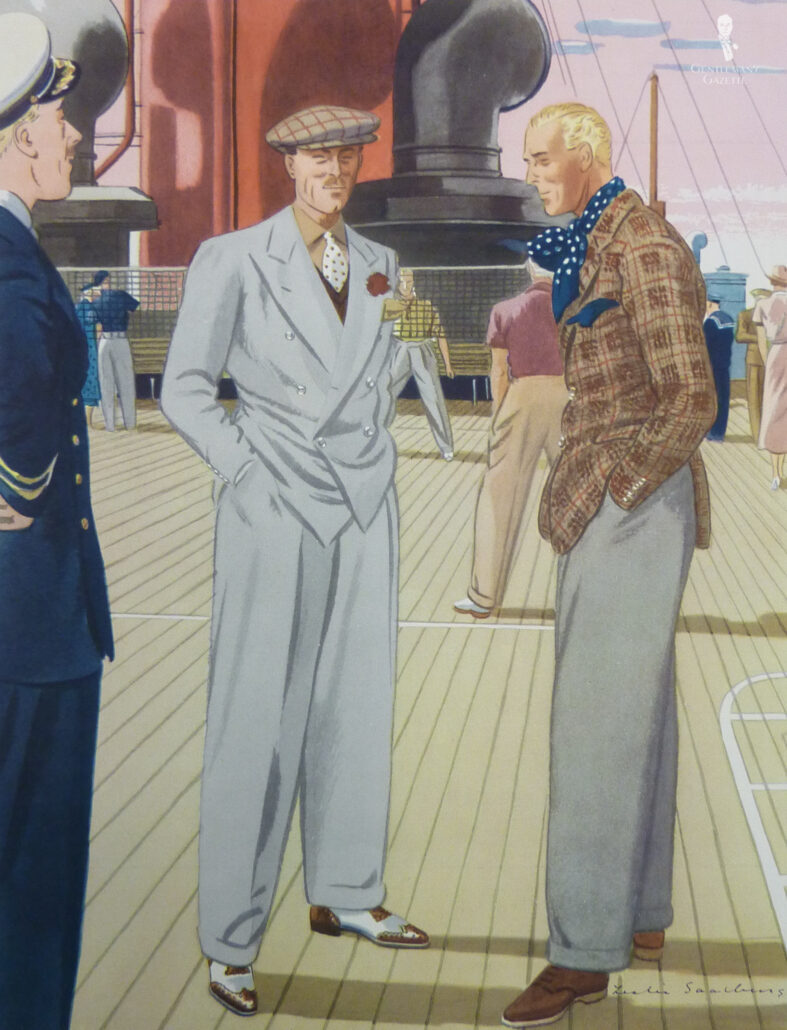
A flat cap worn with a gray suit and brown shirt in warm weather.
Until the late 19th century, the flat cap remained a preferred example of headgear for the working classes. It was easy to make, relatively cheap, functioned well, and wasn’t fussy, being simple to clean and store.
These practical attributes, however, also made the hat very attractive to wealthier men who began to wear it while engaged in sporting events in the country, including riding, stalking, shooting, golf, and similar athletic pursuits.
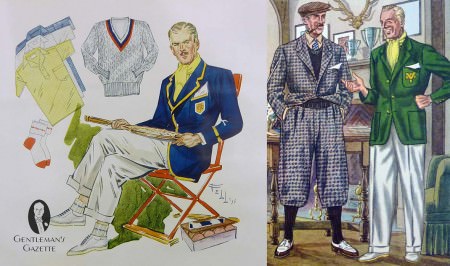
The flat cap was often associated with country living.
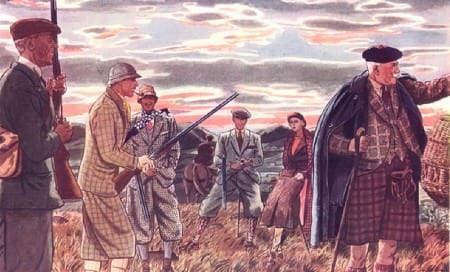
Caps were a common sight in gentlemanly country life.
While visually similar to working-class wool flat caps, the flat caps worn by leisurely gentlemen were made from luxurious materials, such as fine wool shells with cashmere lining, and worn with sporting attire, like tweed.
The Flat Cap in the Early 20th Century
During the early 20th century, the flat cap departed from county to town as a casual hat. In most countries, men of all stations wore it, although primarily upper-class men tended to flaunt the cap only on very casual occasions or when engaged in athletic or sporting pursuits.
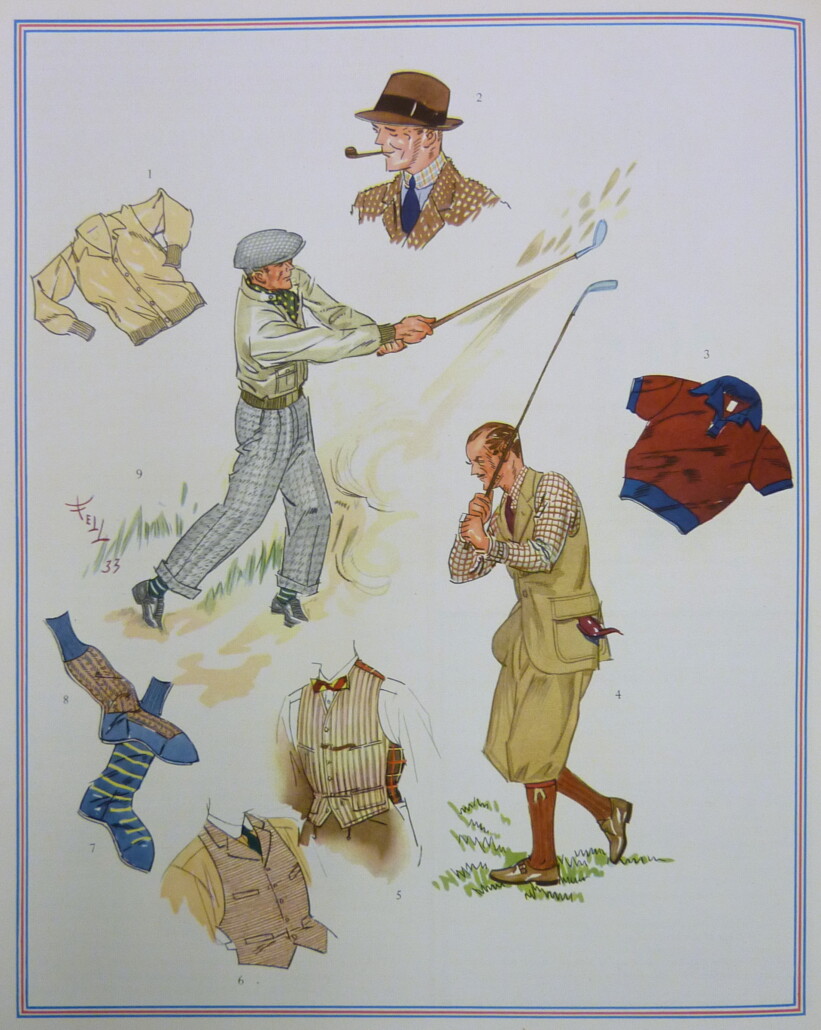
Flat caps were often for playing sports.
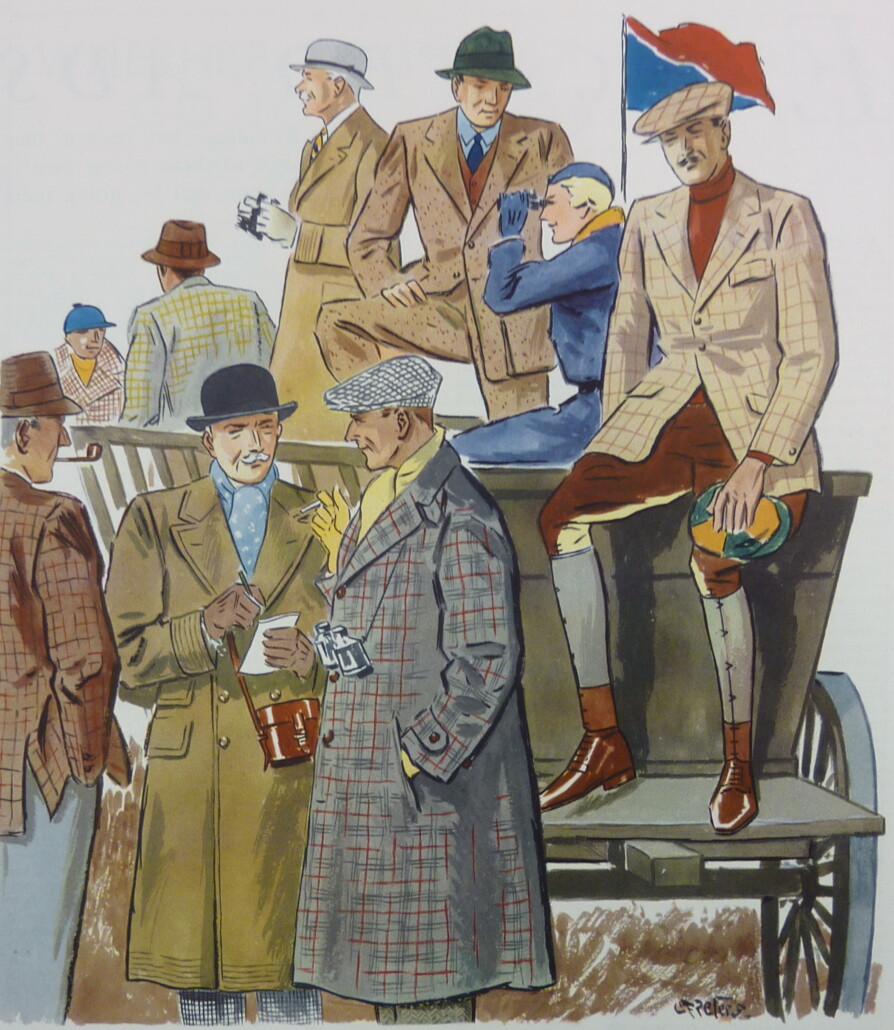
Flat caps were favored in the cooler months.

Flat caps remained associated with gentlemanly country pursuits.
In the United Kingdom, flat caps remained closely associated with the working classes in all urban settings: wealthier gentlemen restricted the use of the hat almost exclusively to their country estates.
The flat cap was most popular in the 1910s and 1920s, serving as a comfortable but still stylish alternative to the stiffer and more formal day hats popular at the time.
The preferred hat for
Newsboys
Throughout popular media, especially film and television, you will likely see newspaper boys – children who sold newspapers on the street – wearing paneled flat caps, so much so that they are sometimes called “newsboy caps.” These so-called “newsies” preferred panel or flat caps because they were relatively inexpensive, kept the wearer warm, and could take a beating, not requiring special boxes or storage conditions like more structured hats.
The Flat Cap Fades in Popularity

During the 1930s, fedoras became increasingly popular in menswear.
During the Great Depression, flat caps slowly began to fade in popularity: money was scarce for the vast majority of the population, and so men preferred to spend their limited budgets on the fedora, which was more versatile in that it could be dressed up or down to suit a wider variety of formalities.

“I’m really not a sap / That’s plain to see / But if I wore a cap / Then they’d never let me back in the university!”
From "I Haven't Got a Hat" (1935)
After World War II, the flat clap largely disappeared, replaced by more formal, and now cheaper to make, hats like the fedora and trilby. As general hat-wearing declined precipitously in the 1960s, flat caps largely disappeared in popular culture, although they enjoyed a brief resurgence in popularity as a lady’s hat in the 1970s.
Amongst men, however, other styles of casual hats, such as the baseball cap and bucket hat, replaced the flat cap amongst nearly everyone except a few dedicated Classic Style aficionados.
Why did men stop wearing hats?
The Flat Cap Today
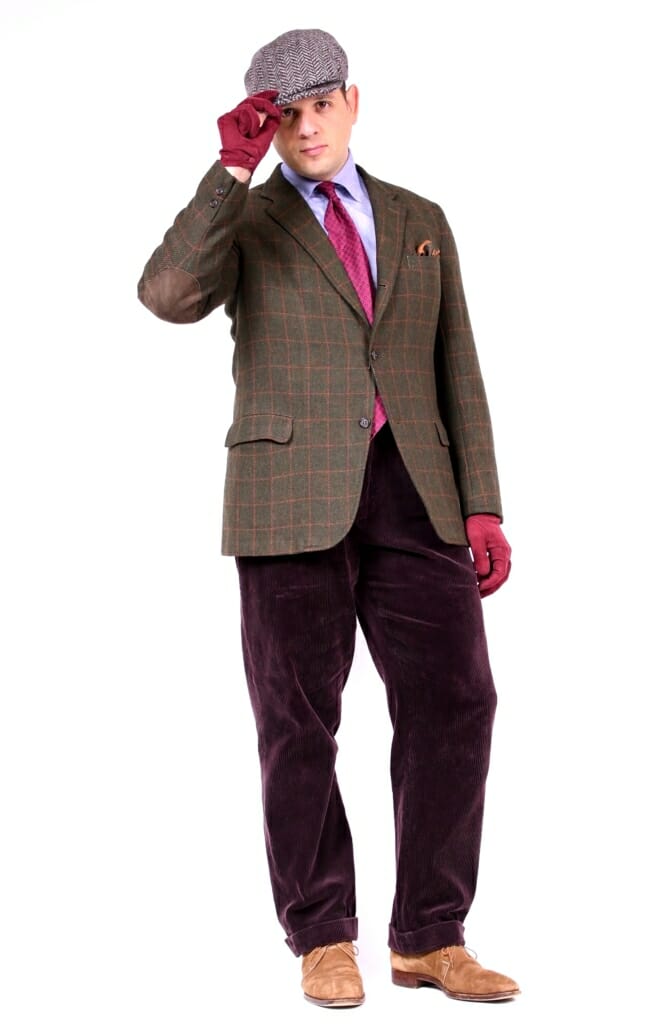
Colorful flat cap ensemble.
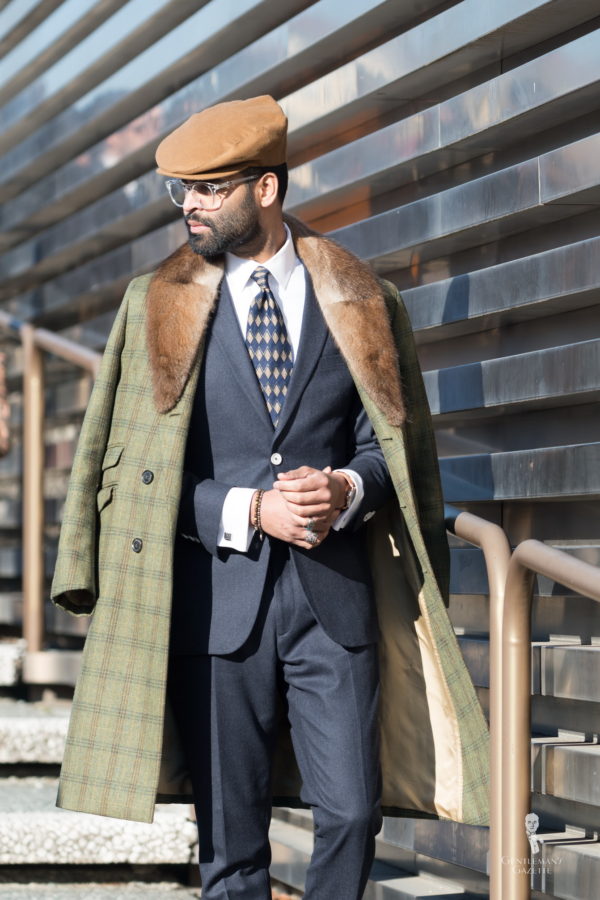
Bold flat cap ensemble at Pitti Uomo.
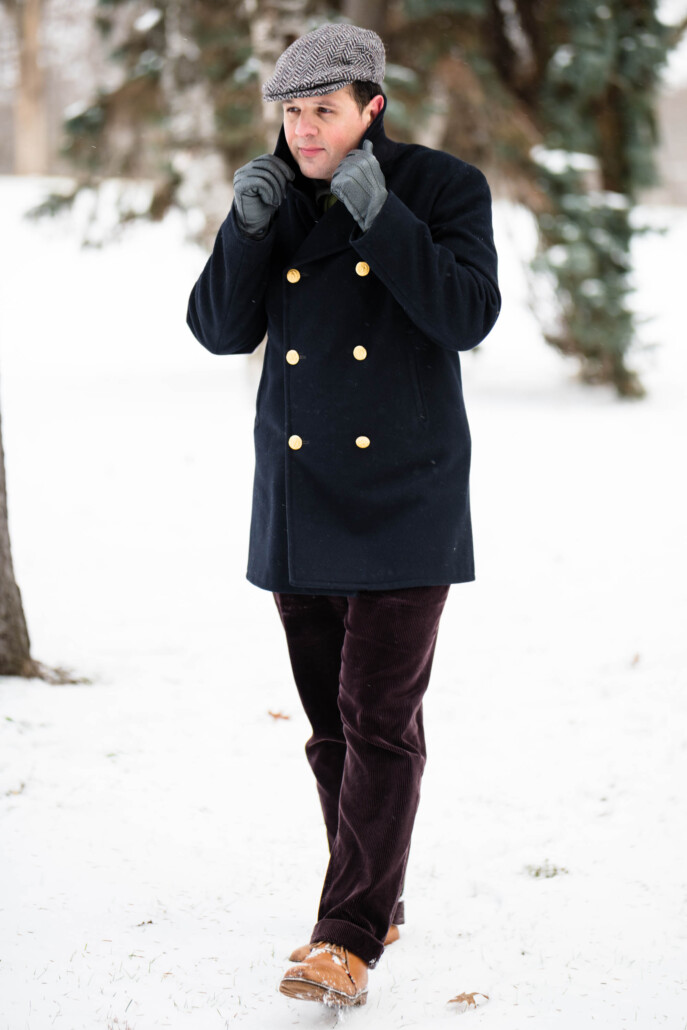
Insulating winter flat cap ensemble.
Among Classic Style enthusiasts and the generally well-dressed, flat caps remain a favored casual hat, filling a unique niche into which many other hat types will not fit. Stylish public figures, like members of the aristocracy and royalty, are often seen wearing flat caps when engaged in traditional gentlemanly sports and pastimes.
As a result, flat caps have become increasingly popular with influencers and celebrities, sported by men as varied as David Beckham and Brad Pitt.
Their popularity has been further buoyed by their appearance on period television shows and films, especially Peaky Blinders, where flat caps, allegedly featuring razors sewn into the brims, are a signature feature of the serial’s main characters.
Did the Peaky Blinders really have razors in their hats? Find out!
Flat Cap FAQ
What is a flat cap?
A flat cap is any hat with a rounded, forward-slanting silhouette and a flat crown. The two most common constructions for a flat cap are a simple flat cap and a panel flat cap.
What is a simple flat cap?
This cap has a level, trim silhouette owing to the single-piece flat construction of the top of the hat. The body of the cap is pulled forward over the brim, and it is either sewed or snapped to the top edge of the brim to create a triangular side profile.
What is a panel flat cap?
As known as a “newsboy hat,” this cap has a looser, more volumized silhouette that is created by sewing triangular panels of material together from a central point on the top of the hat, which is covered by a cloth button. The eight-panel flat cap is the most popular iteration.
Why did newspaper boys wear flat caps?
Flat caps were popular with the newspaper vendors of the late 19th and early 20th centuries because they were relatively cheap, easy to clean, comfortable, and insulating: essentially, a hardworking hat for a hardworking profession.
Do only kids or old men wear flat caps?
Flat caps are traditionally associated with children because they were worn by newspaper boys in the first decades of the 20th century and with older men because they were popular during the Golden Age of Menswear; men who wore them during that era continue to wear them today. With their casual flair and versatility styling potential, however, flat caps can be worn and enjoyed by men of all ages.
Can I wear a flat cap with a suit?
Yes, you can! One of the most popular ways to wear a flat cap as part of Classic Style is with a casual day suit; consider wearing fabrics associated with the country, like wool or tweed.
Can I wear a flat cap year round?
Because of their insulation capacity and voluminous silouette, flat caps are not appropriate to the hot months. They can, however, be worn in all other seasons, from early fall to late spring.
How to Wear a Flat Cap
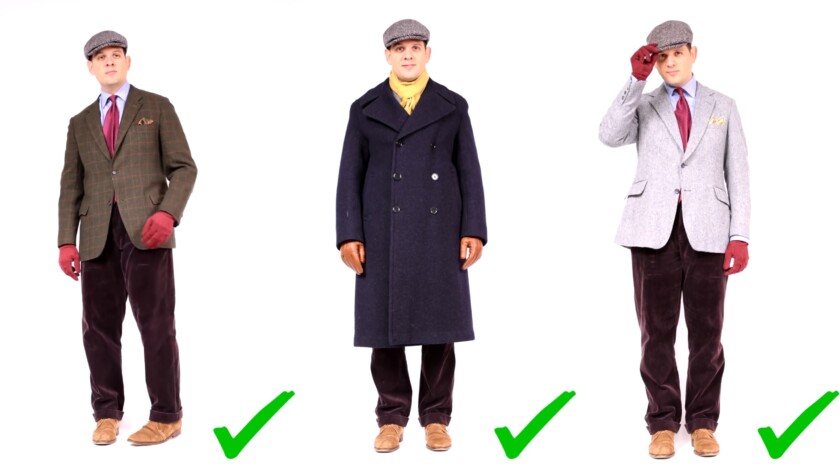
Flat caps can suit a wide variety of ensembles.
If you are a lover of Classic Style, a flat cap will suit your wardrobe no matter your age, occupation, or typical formality. Sized properly, they flatter nearly all face shapes and they can be styled to suit casual, informal, and even more formal attire.
The Do’s and Don’ts of Flat Caps
1
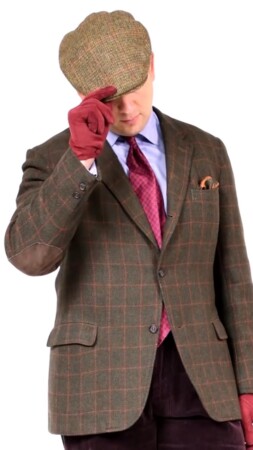
Do Utilize Contrast When Planning Your Outfit
If you’re wearing a tweed cap, make sure that the material of your hat contrasts sufficiently with the material of your coat or jacket. Patterns that are too similar will look odd next to each other, so consider a solid color for one and a pattern for the other.
2
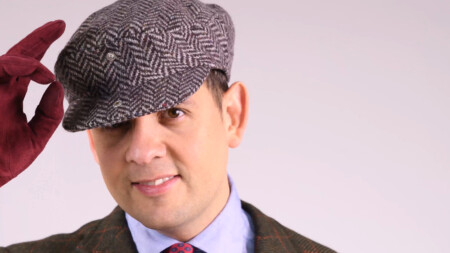
Don’t Wear a Flat Cap Unpinned or Unsnapped
Traditionally, the bodies of flat caps were worn pinned or snapped into the brim of the hat. While you can wear caps unsnapped, the look tends to appear dated and evocative of how the cap was worn by women during the 1970s. In recognition of this fact, many contemporary flat caps are sold with the body and brim sewn together and inseparable.
3
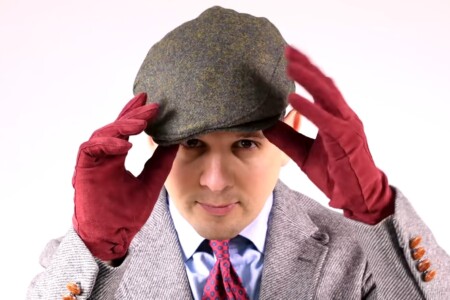
Do Shape Your Cap's Brim
Most flat caps come with a straight and flat brim, but the material is sufficiently malleable to be bent or rounded for a more unique appearance. With your hands, gently bowl in the brim so that it naturally follows the slope of your head and the contour around your face. Repeat this process in brief intervals so that you do not overextend the fold: once bent, the brim can be difficult to easily straighten again.
4
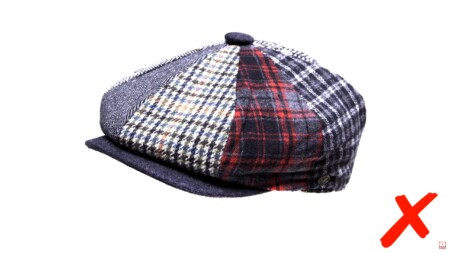
Don't Wear Overly Bold Flat Caps
As an accessory associated with the working classes or stately country pursuits, overly flashy flat caps are incongruous with Classic Style and should be avoided in this mode of dressing. Flashy flat caps include those with unusual coloring, like bright reds or neon greens, those with overly busy patterns, or those with graphic detailing. An especially common offender is the patchwork or particolored flat cap: this particular kaleidoscope of colors comes in and out of fashion but was not part of the cap’s original look.
5

Do Wear Your Flat Cap Seasonally
Flat caps have been favored for centuries because of their ability to trap and retain heat. As such, while they can be worn in the fall, winter, and spring, they are not typical of summer wear because they are too stuffy in traditional materials. While some contemporary flat caps are made from hot-weather fabrics like linen, the bulky, tufted look of the hat is simply incongruous with a summer look: we recommend wearing a Panama hat instead.
6
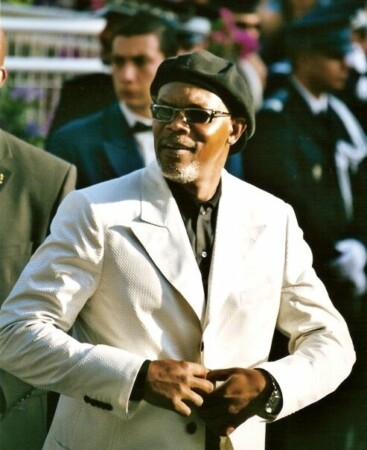
Don't Wear Your Flat Cap Backwards
Some men, with Samuel L. Jackson being the most famous example, wear their flat caps backwards as a statement piece. This look is extremely bold and not typical of Classic Style: if you wish to wear your flat cap the conventional way, keep it oriented to the front.
Outfits Based Around Flat Caps
Flat Caps Have a Variety of Applications in Classic Style
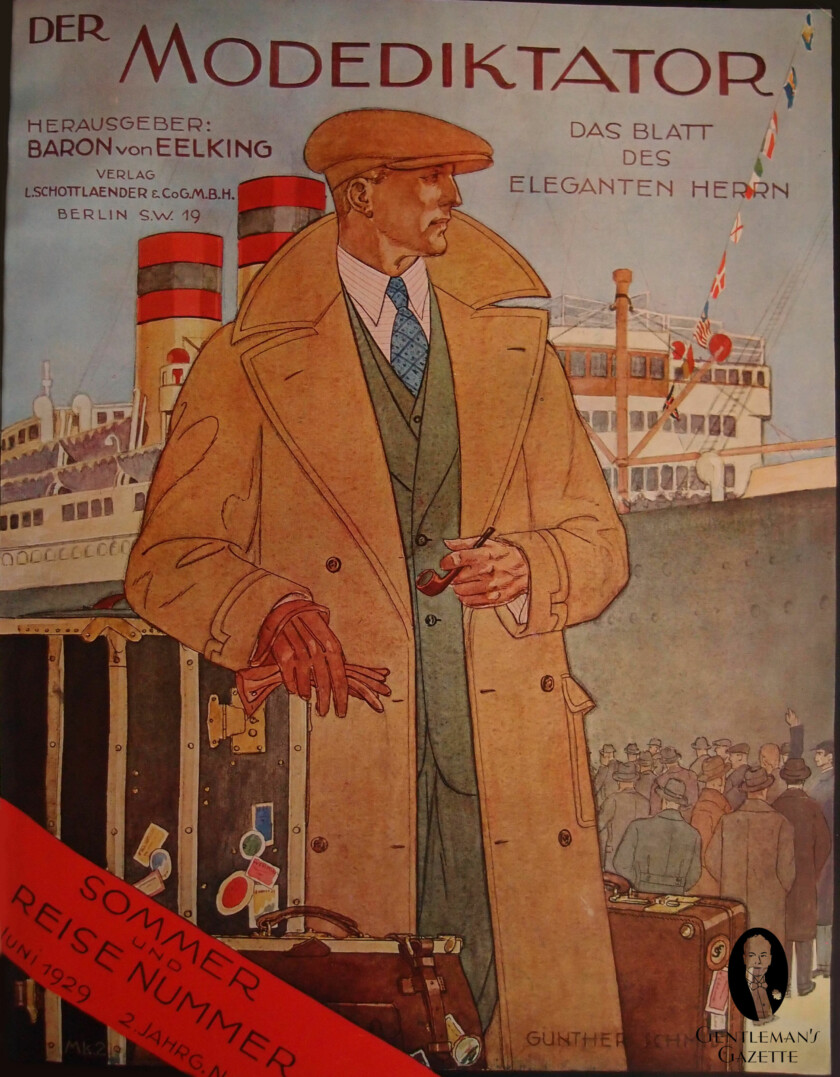
Flat caps have been a part of Classic Style since the dawn of the Golden Age of Menswear.
It is too often assumed that flat caps are dated headwear associated with children or with older men. In fact, these caps can be utilized as a creative styling element in a variety of outfits that can ascend or descend the formality scale. Flat caps are especially elegant with Classic outerwear, like overcoats.
Distinguishing Flat Caps from Attire with Color
In these examples, a clear distinction between the colors of the flat cap and the jacket help to visually differentiate both articles.

Mottled green flat cap worn with gray diagonal weave jacket

Mottled green flat cap worn with light gray suit
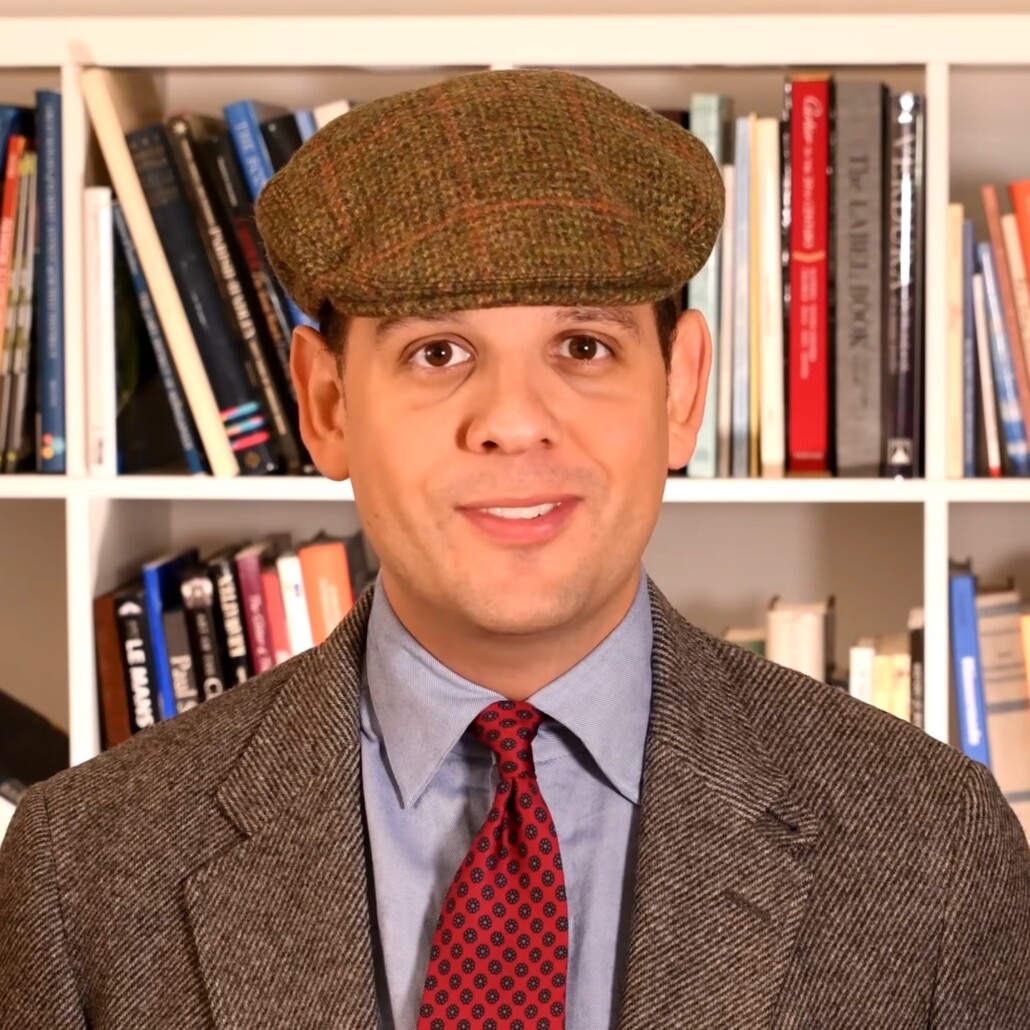
Olive green flat cap worn with gray diagonal weave jacket
Flat Caps and Attire Too Similar, but Not the Same, in Color
As an example of what not to do, the flat cap and jacket on the left are not the exact same color, but they are so tonally and visually similar as to become muddled and awkward. Avoid this situation by either ensuring sufficient contrast or precisely matching the colors of both articles, as illustrated in the example on the right.
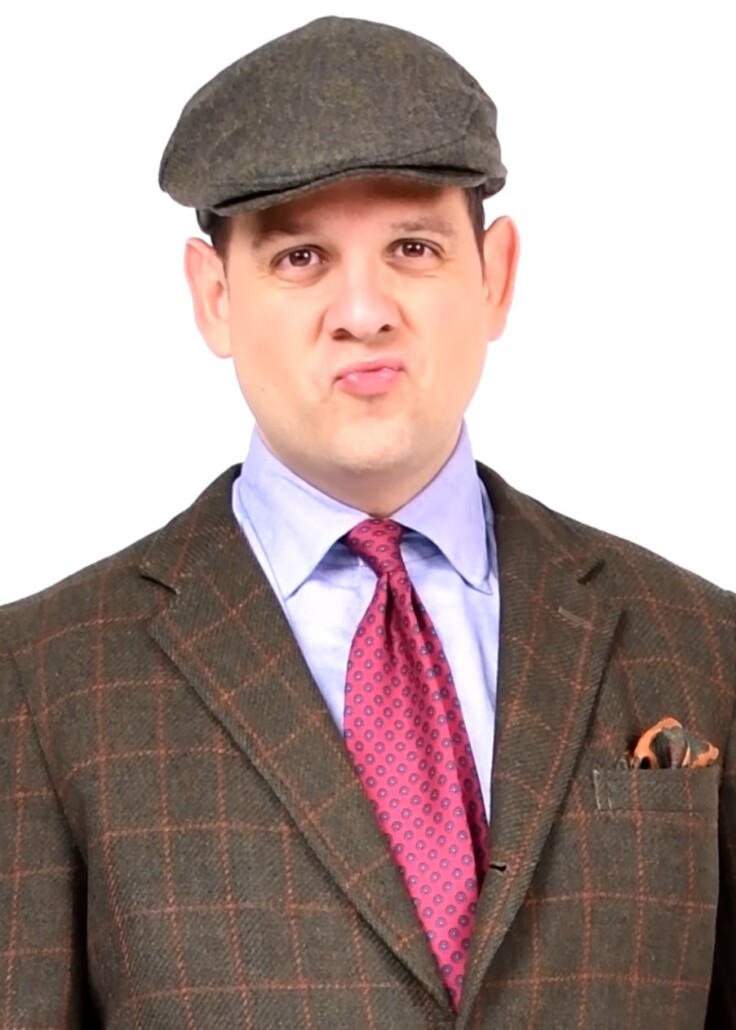
This ensemble appears muddy because the elements are similar, but not exactly, the same color.
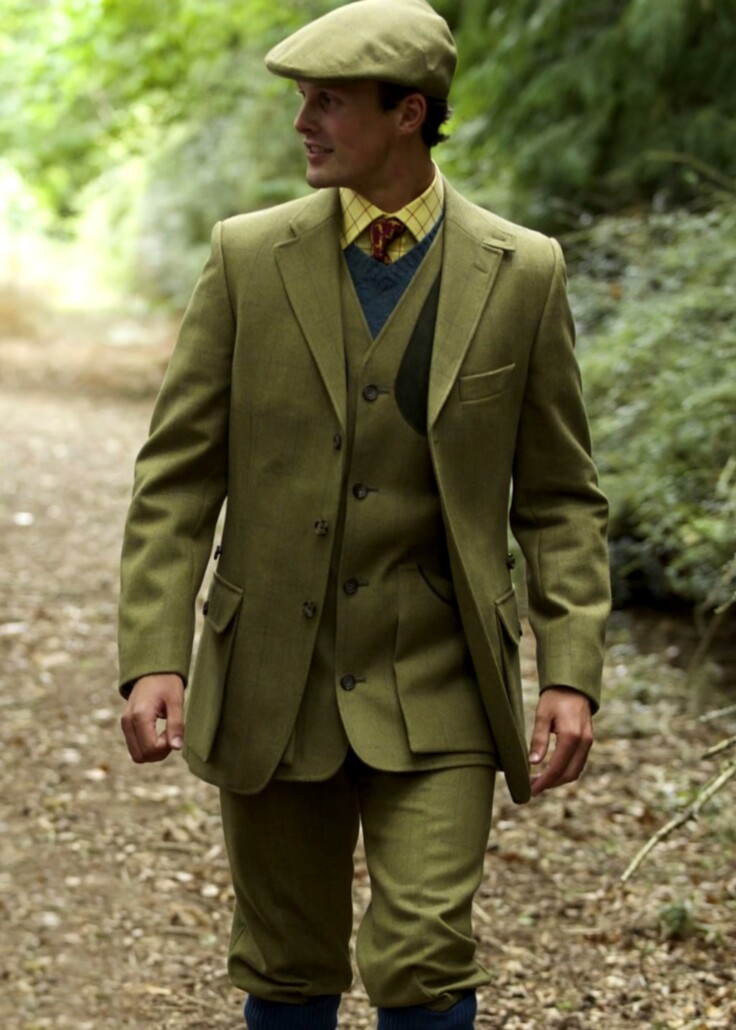
An elegant hunting ensemble in which all articles, including the flat cap, are made from the same material.
Create exceptional ensembles with the color wheel
Employing Oppositional Pattern Complexities
In these looks, relatively sedate flat caps help to tone down visually complex jackets. The same is true of boldly-patterned flat caps worn with more sedate jackets and coats.

Mottled green flat cap worn with Donegal twitter coat
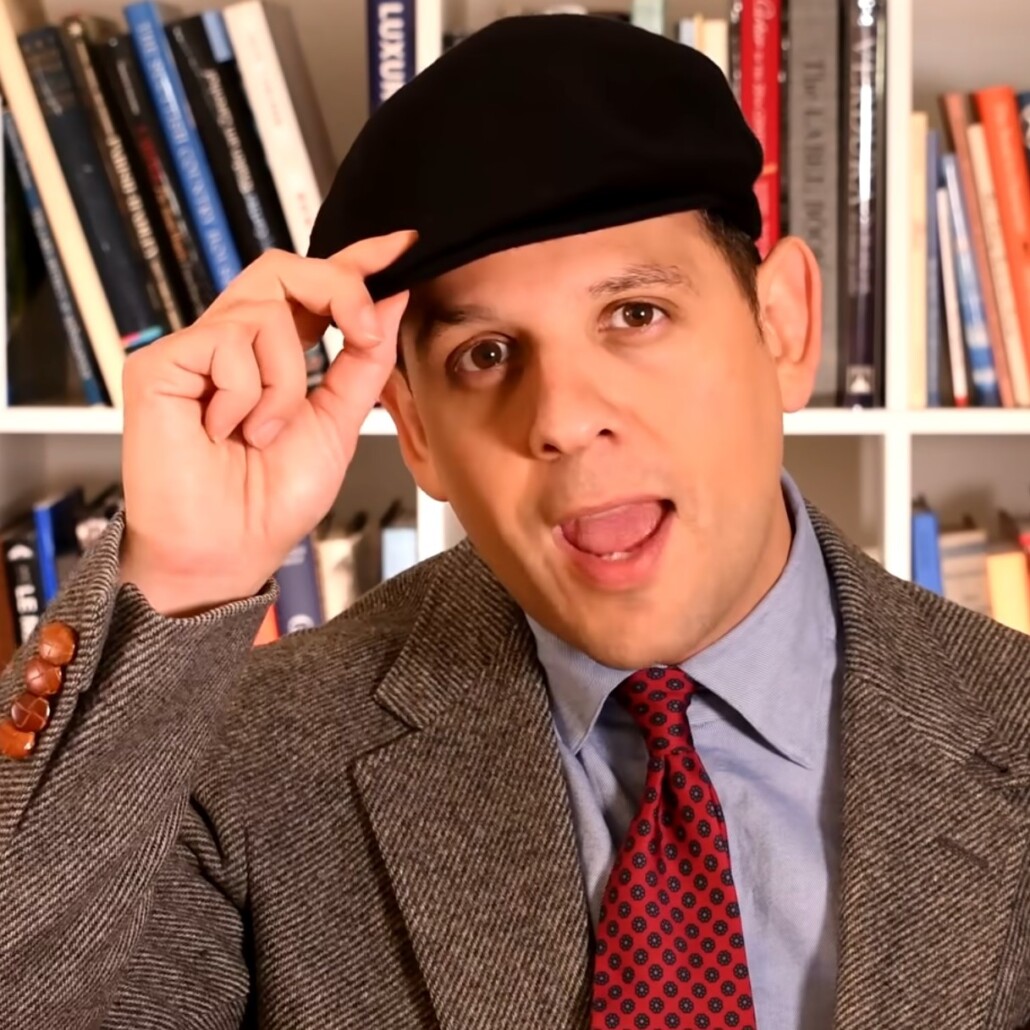
Black flat cap worn with gray diagonal-weave jacket
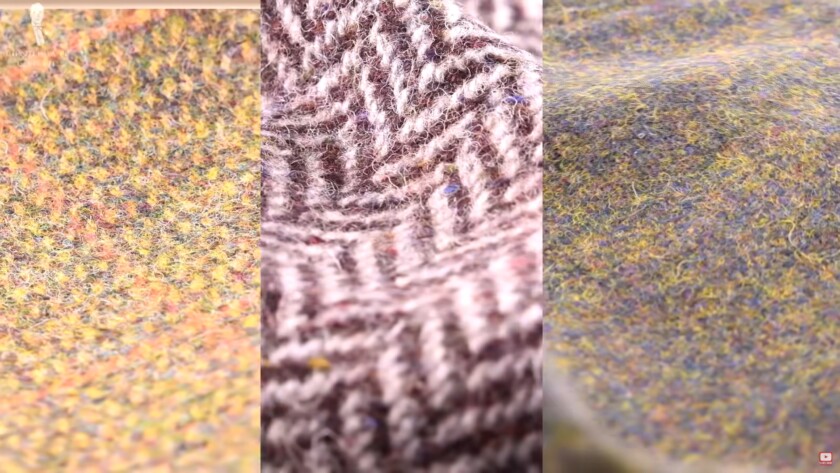
Flat caps are available in a variety of colors, patterns, and weaves.
Bold Attire and Bold Flat Caps

A Donegal tweed cap can calsh with a Donegal tweed jacket.
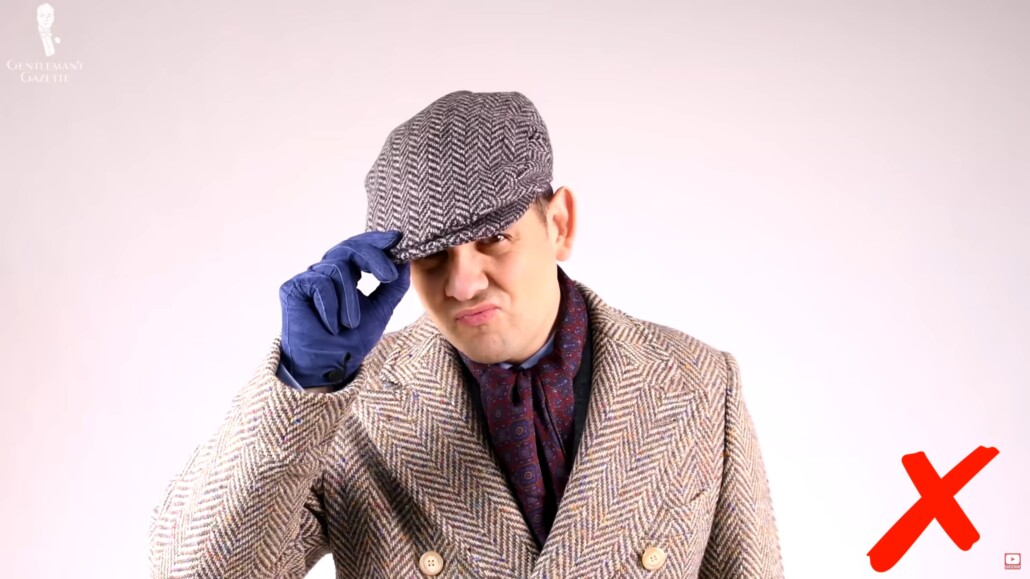
A loud herringbone flat cap is a little too noisy with an equally loud herringbone overcoat.
In most cases, visually complex flat caps do not pair well with visually complex garments such as jackets and coats. The excessive complexity, centered entirely in your upper half, tends to be overwhelming.
Learn how to tastefully match patterns
How to Buy a Flat Cap
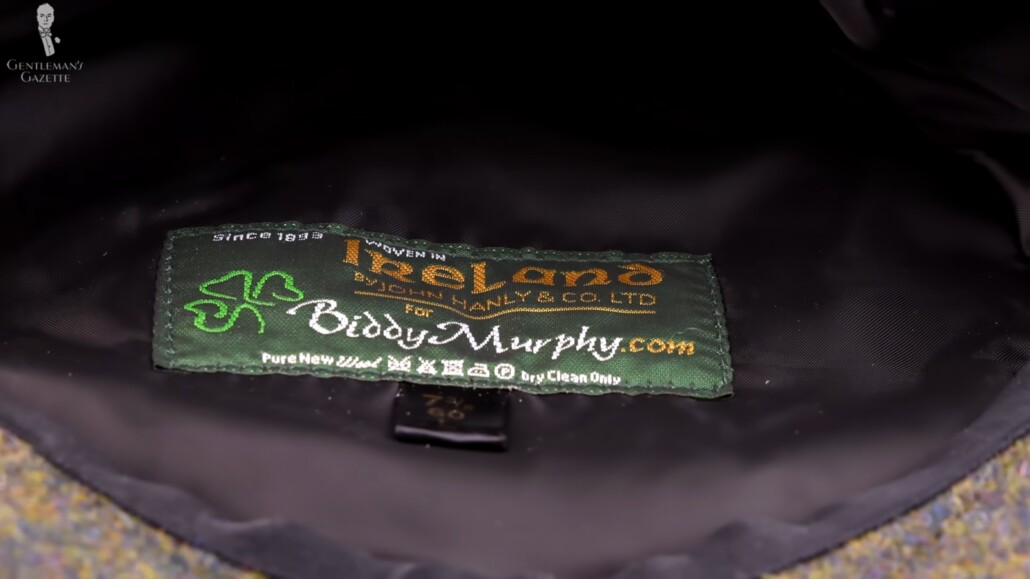
Ireland by John Hanly and Co. Flat cap
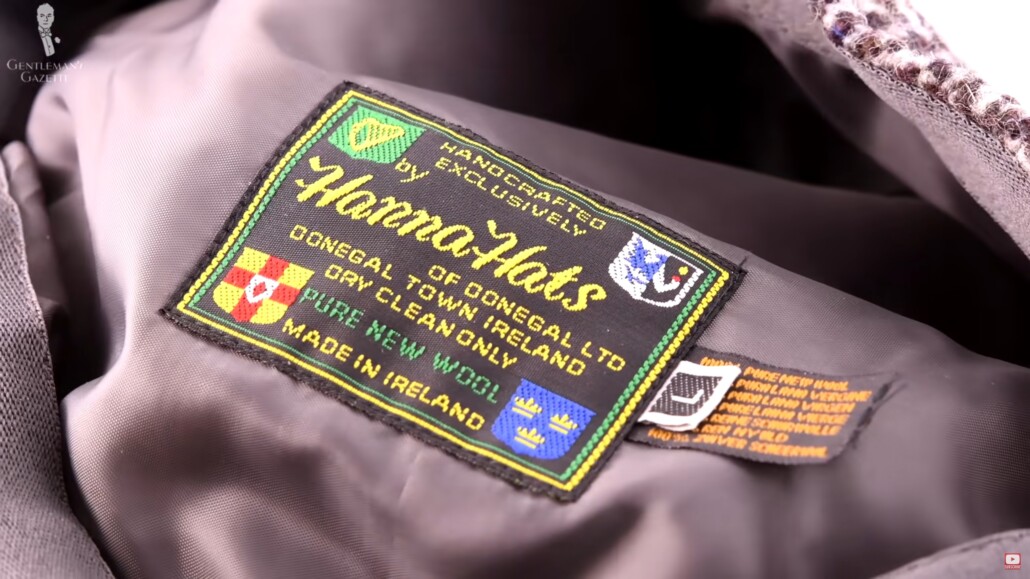
Hanna Hats Flat Cap
With their increasing popularity, more and more brands are offering their take on the stylish flat cap. Even though this headgear is casual, we feel that it is worth investing in a quality example so that you can truly get your money’s worth and look your very best.
Hallmarks of a Quality Flat Cap
Employ Traditional Fabrics
The flat cap was originally constructed from wool, tweed, and cotton, and these fabrics remain the most classic options for the shell: avoid non-traditional materials such as leather or denim, which can appear trendy and overly casual.

Leather flat cap
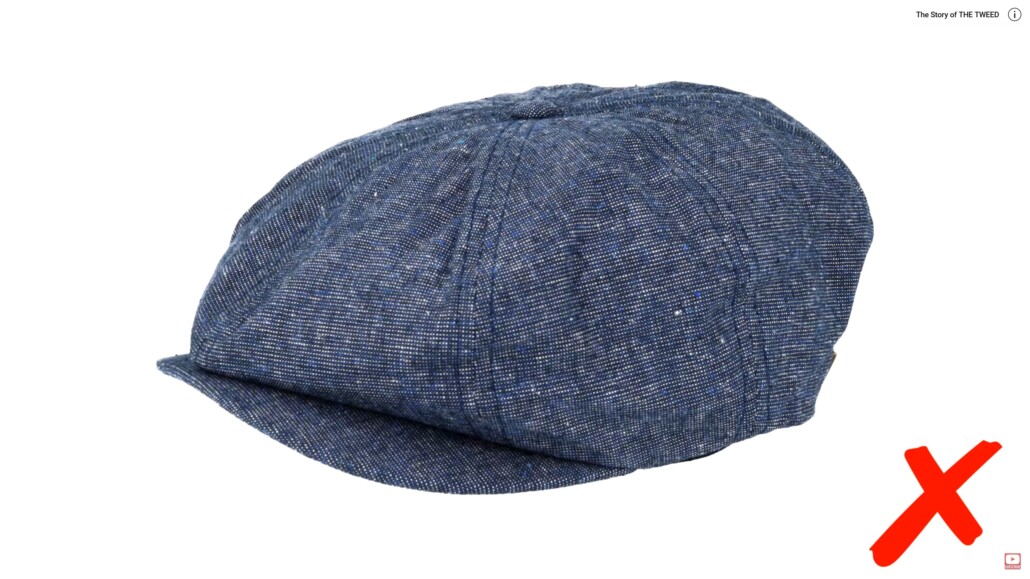
Denim panel cap
Favor Natural Materials
When selecting materials for both the shell and the lining, choose a natural composition. This will allow for both exceptional insulation, keeping you warm, and breathability, preventing your head from becoming stuffy and sweaty. Polyester and other synthetic materials, while inexpensive, have inferior insulating capabilities, failing to keep out the chill while still managing to feel clingy and sodden.
Avoid Prominent Branding
When selecting a flat cap, avoid oversized branding. Logos on flat caps, even logos on the reverse, are not typical of Classic Style and tend to appear affected and somewhat tacky. Ultimately, you want everyone to focus on your personal style, not someone else’s brand.
How to Size a Flat Cap
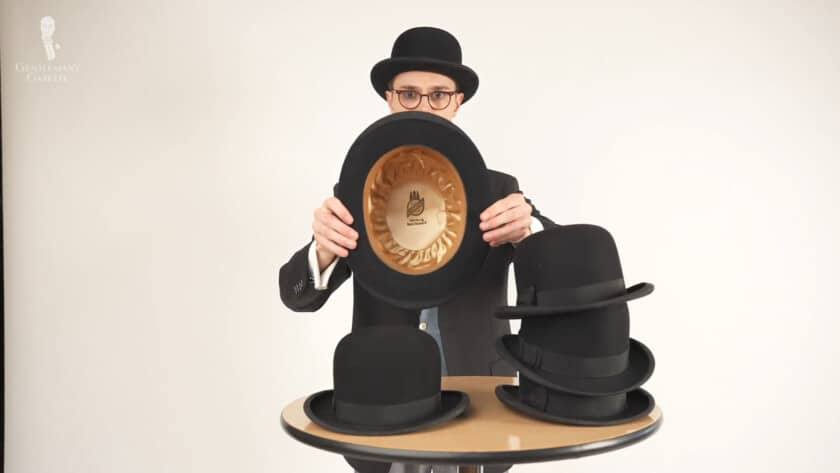
Flat caps are easier to fit than more formal hat types like the bowler.
Thanks to its soft sewn construction and malleable fabric shell, the flat cap is easier to fit than more structured hats. Because the hatband itself provides most of the structure of the hat, it should sit comfortably along your forehead.
- To find your size, you need only wrap a measuring tape around your head following a straight line around your cranium at or slightly above your ears, depending on the size and proportions of your features.
- Flat caps should fit snugly enough to remain in place while moving or during high winds but not so tight as to feel constricting.
- A flat cap should feel extremely comfortable on your head, so keep that in mind while trying sizes.
Flat Cap General Sizing Chart
Ideally, you should try on your flat cap in person before buying it. To assist you in making online purchases, however, consult the following table to determine standard sizes based on the American, English, French, Metric, and Relative metrics, with corresponding measurements in centimeters, and decimals and fractions of inches.
| USA Sizes | English Sizes | French Sizes | Metric Sizes | Relative Sizes | Inches | Inches (Nearest 64ths) | Inches (Nearest 8ths) | Centimeters |
|---|
| 6 1/4 | 6 1/3 | 2-Nov | 50 | Child | 19.5188 | 19 33/64 | 19 7/8 | 50 |
| 6 3/8 | 6 1/4 | 2 | 51 | Child | 19.9115 | 19 29/32 | 20 1/3 | 51 |
| 6 1/2 | 6 3/8 | 2 1/2 | 52 | Extra Small | 20.3042 | 20 11/32 | 20 2/3 | 52 |
| 6 5/8 | 6 1/2 | 3 | 53 | Extra Small | 20.6969 | 20 45/64 | 20 3/4 | 53 |
| 6 3/4 | 6 3/4 | 3 1/2 | 54 | Small | 21.0896 | 21 5/64 | 21 1/8 | 54 |
| 6 7/8 | 6 3/4 | 4 | 55 | Small | 21.4823 | 21 31/64 | 22 1/4 | 55 |
| 7 | 6 7/8 | 4 1/2 | 56 | Medium | 21.875 | 21 7/8 | 22 1/3 | 56 |
| 7 1/3 | 7 | 5 | 57 | Medium | 22.2677 | 22 17/64 | 23 | 57 |
| 7 1/4 | 7 1/3 | 5 1/2 | 58 | Large | 22.6604 | 22 21/32 | 23 1/3 | 58 |
| 7 3/8 | 7 1/4 | 6 | 59 | Large | 23.0531 | 23 3/64 | 23 1/2 | 59 |
| 7 1/2 | 7 3/8 | 6 1/2 | 60 | Extra Large | 23.4458 | 23 29/64 | 23 2/3 | 60 |
| 7 5/8 | 7 1/2 | 7 | 61 | Extra Large | 23.8385 | 23 27/32 | 23 7/8 | 61 |
| 7 3/4 | 7 5/8 | 7 1/2 | 62 | Extra-Extra Large | 24.2312 | 24 15/64 | 24 1/3 | 62 |
| 7 7/8 | 7 3/4 | 8 | 63 | Extra-Extra Large | 24.6239 | 24 5/8 | 24 5/8 | 63 |
| 8 | 7 7/8 | 8 1/2 | 64 | Extra-Extra Extra Large | 25.0166 | 25 1/64 | 25 | 64 |
The best flat caps will be sized according to the same standards as dress hats. Most low- to mid-range caps, however, are increasingly sold with relative Small, Medium, and Large sizing. If possible, we suggest avoiding these brands, but if such a hat is the best option for you, be sure to refer to the manufacturer’s sizing guidelines to find the proper fit. The above table is offered only for convenience and may not be accurate for all brands.
Flat Cap Brands to Consider
We have experience with the following flat cap brands. As you search for a cap to wear, these could be excellent places to start, although in general, most classic haberdashers offer their take on a flat cap, so if you have a favorite hat brand, they could very well make a flat cap.
Wigens
Available on Amazon, this Swedish brand is very accessible and offers an impressive range of simple wool caps, all made from wool. Their herringbone Longshoreman cap is a favorite of Raphael’s.
Buy It Here
Christy's
Based out of London, Christy’s offers an extensive line of flat caps in a variety of styles, colors, and patterns. We especially like their take on the newsboy cap, which they call a Baker Boy, available in an array of timeless patterns made from wool for exceptional warmth and moleskin cotton for optimal comfort.
Buy It Here
Stetson
While most famous for their cowboy hats, Stetson does offer an impressive line of classic caps. While many of their offerings are rather fashion-forward, they do have a line of hats with more historic lines and patterns made from linen and silk.
Buy It Here
James Lock & Co.
Known as one of the most famous, and most expensive, hat brands available today, Lock & Co. may be a splurge purchase but they offer their caps in high-end materials like cashmere and, unlike many other brands, have individual, rather than merely relative, sizes available. If you want to invest in a quality flat cap, they could be a great option.
Buy It Here
Outfit Rundown

Today’s outfit highlights the versatility of a quality flat cap.
In today’s outfit, Raphael is wearing a light and dark gray tweed simple flat cap with a bold herringbone pattern. He has paired it with a vintage green tweed sport coat with windowpane pattern: the distinct pattern and color prevent the jacket and cap from awkwardly blending into each other. Raphael acquired this jacket at Bobby from Boston.
For neckwear, Raphael is wearing a madder silk tie from Fort Belvedere whose body color picks up on the warm-toned window pane pattern in his jacket. The blue macclesfield neat pattern also harmonizes with the blue of his dress shirt in a soft cotton flannel, which is the perfect weight for a fall ensemble. Because the shirt has French cuffs, Raphael is wearing vintage double-sided, two-toned enamel cufflinks that he found at a flea market.
To further enhance the warm tones in his jacket and tie, Raphael is wearing a dark bronze madder silk pocket square with red and green diamond motif and paisley, also from Fort Belvedere. He also keeps the chill away with his rusty orange suede dress gloves.
To ground the ensemble with the addition of a dark but rich color, Raphael is wearing maroon-brown corduroys from Ralph Lauren, which are distinctly autumnal in both their texture and color.
On his feet, Raphael has opted for a lighter color to contrast with his trousers: deer-suede tan Chukka boots from Saint Crispin’s. His brown socks from Fort Belvedere bridge the transition between the tones of his trousers and his boots, and the cream and green clock detailing harkens to the other cool colors in the outfit.
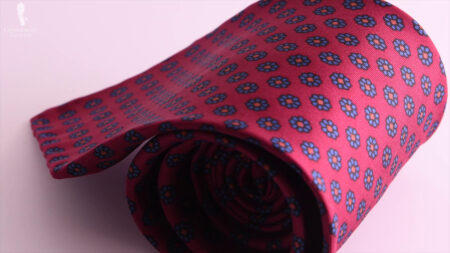
Fort Belvedere
Madder Silk Tie in Dark Ruby Red Macclesfield Neats Blue Orange Pattern
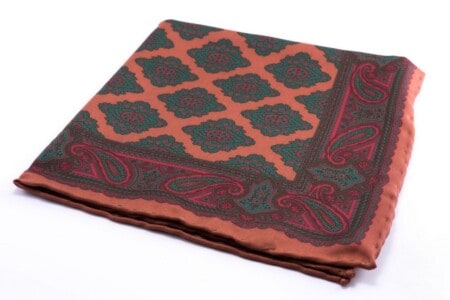
Fort Belvedere
Dark Bronze Madder Silk Pocket Square with Diamond Motif and Paisley
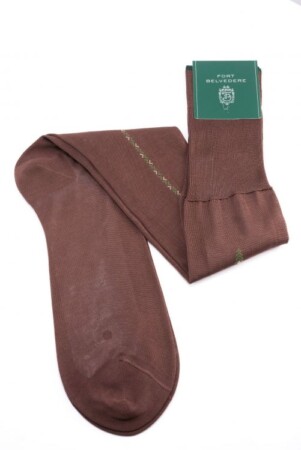
Fort Belvedere
Mid Brown Socks with Green and Cream Clocks in Cotton
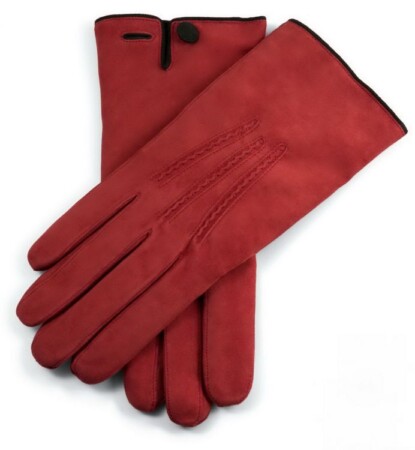
Fort Belvedere
Orange Bronze Rust Suede Men's Dress Leather Gloves with Cashmere Lining Button
Conclusion

Flat cap worn with walking ensemble.
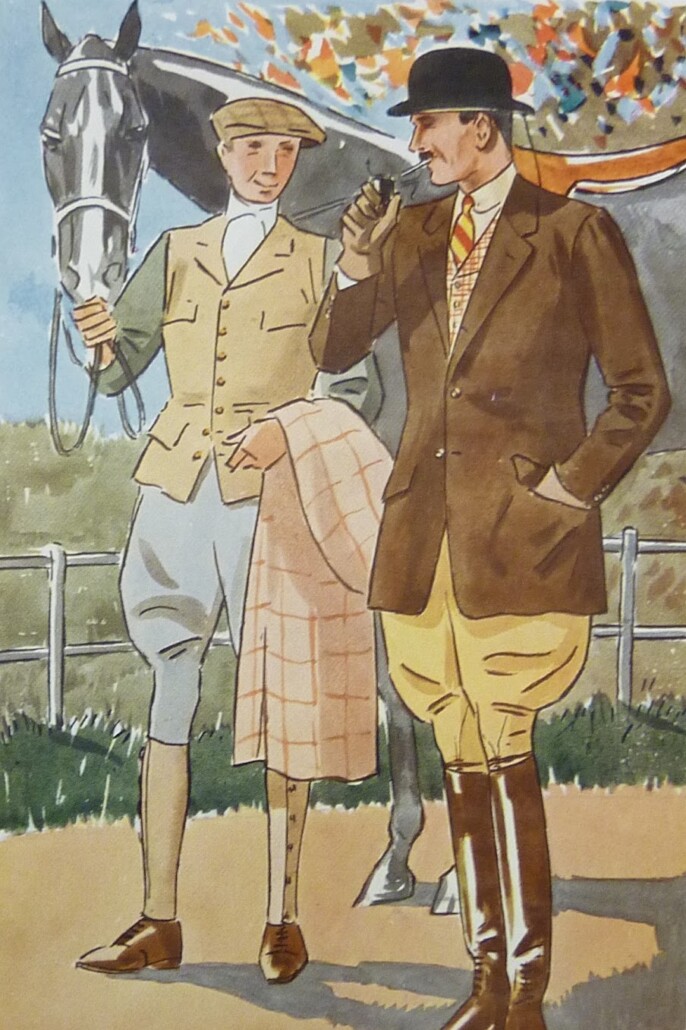
Flat cap worn with equestrian ensemble.
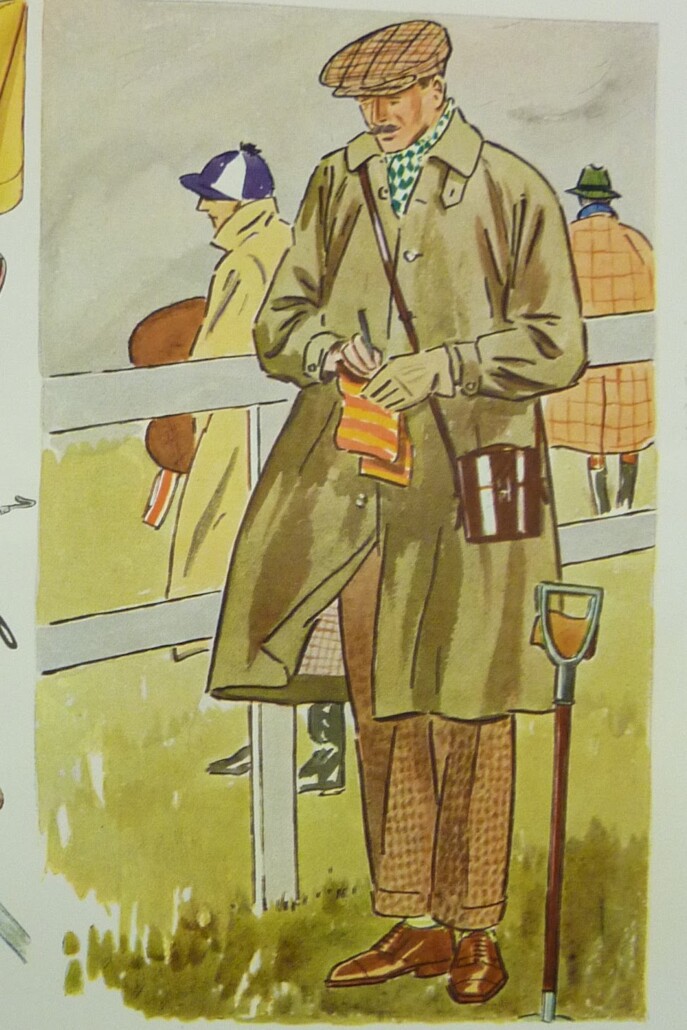
Flat cap worn by a racing fan.
We hope that after studying this guide, you feel confident in how to best style flat caps within your wardrobe. Whether you prefer channeling the rough-and-tumble Tommy Shelby or carry yourself with the dignity of Lord Granthan on a shoot, we know that you will look fantastic!
Let us know in the comments, how do you like to wear your flat cap?
https://www.gentlemansgazette.com/flat-cap-newsboy-hat/
 Backyard GrillingWeekend WarriorsAdvice from DadBeard GroomingTV Shows for Guys4x4 Off-Road CarsMens FashionSports NewsAncient Archeology World NewsPrivacy PolicyTerms And Conditions
Backyard GrillingWeekend WarriorsAdvice from DadBeard GroomingTV Shows for Guys4x4 Off-Road CarsMens FashionSports NewsAncient Archeology World NewsPrivacy PolicyTerms And Conditions
